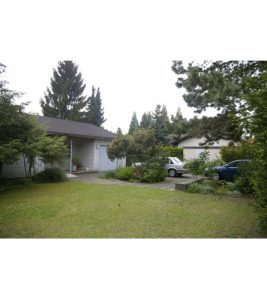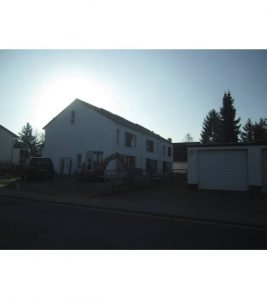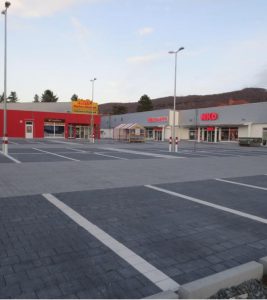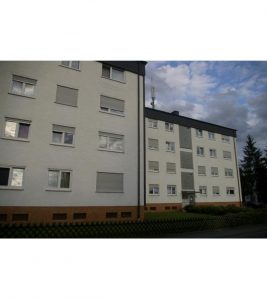By Roger Keil
Density is a concept that enjoys much love in urbanist circles.1 It is often seen as a necessary precondition for sustainability and even resilience. It has become a rarely questioned normative objective. Densification and intensification are desired processes of urban planning and development. So how about ‘good density’? Is the term as simplistically positive as is often suggested? Are processes of intensification value free apart from their positive effect on the environment? I offer a few observations below that may have to be taken into account when discussing the term in policy and planning debates. My main interest here lies in illuminating the notion of urbanizing, i.e. densifiying the suburbs.
If we talk about suburbs and density, we need to first recognize that both terms are “chaotic”. They defy clear definition but everyone uses them with a certainness that often leads to heated debate and misunderstanding. There are many versions of both suburbs and density.
 In the growing debate on what to do with suburbs and suburbanization, the normative preference of most self-declared urbanists is clear. Suburbs are deemed unsustainable, costly and unjust due to their sprawling use of land, their increased infrastructure cost and segregative socio-spatial structures.
In the growing debate on what to do with suburbs and suburbanization, the normative preference of most self-declared urbanists is clear. Suburbs are deemed unsustainable, costly and unjust due to their sprawling use of land, their increased infrastructure cost and segregative socio-spatial structures.
Let’s leave aside for now that these normative preferences are cultivated with a set of very stereotypical images on suburbanization at their base – operating with idealized notions of single family homes and individualized backyards, automobilized infrastructures and cul-de-sac streetscapes.
The cultural prejudice against low and medium density also has a certain colonialist tinge. Not only to inner city people seem to know best what’s good for the suburbs and the planet, they also disregard cultural preferences for less dense living in other contexts than North America or Europe. African city builders, for example, for the most, part don’t show much inclination to follow the lead of their Chinese counterparts in building dense, tower suburbs and cities. The African city will unlikely follow the prescriptions for more compactness and density in urban form as it is recommended prescriptively in the Global North.
On the other hand, most North Americans and Europeans would abhor the already existing low rise densities you find in African cities, where the majority live in squatter settlements and slums. Lagos, Nigeria, for example, the forth densest large city in the world by some measure, has a density of 18,150 people per square kilometre but hardly the built form and networked infrastructure to support the kind of urban life North Americans or Europeans would associate with Good Density. In Maputo, often touted as one of the success stories in African urbanization, still 80 percent of the population live in slums. The discourse there is not density but poverty, not abundance but need.
 Density as a site specific quality, is almost meaningless if one doesn’t look at the broader societal context and patterns of use as well. A person can live in a compact, dense, walkable neighbourhood but work a long drive or transit ride away from it. In an age when families are not traditional, and don’t follow the breadwinner/homemaker model of the (sub/urban) past, choice of residence is no longer a question of linear live-work relationships. There is no productive centre where the husbands go by day, and bedroom suburbs where the house wives and the station wagons stay behind. If there are double income earners in one family, they likely work at different locations in the urban region. The location of their home will have to be a compromise. To assume everyone will be able to live and work in a particular, dense part of town is rather unrealistic in this situation.
Density as a site specific quality, is almost meaningless if one doesn’t look at the broader societal context and patterns of use as well. A person can live in a compact, dense, walkable neighbourhood but work a long drive or transit ride away from it. In an age when families are not traditional, and don’t follow the breadwinner/homemaker model of the (sub/urban) past, choice of residence is no longer a question of linear live-work relationships. There is no productive centre where the husbands go by day, and bedroom suburbs where the house wives and the station wagons stay behind. If there are double income earners in one family, they likely work at different locations in the urban region. The location of their home will have to be a compromise. To assume everyone will be able to live and work in a particular, dense part of town is rather unrealistic in this situation.
Another context is wealth and class. Rich people often live in dense neighbourhoods with lots of cultural, culinary and commercial amenities. But those places may not be accessible to public use, they may be gated or concierged, protected from public access or priced out of reach. Density can be one of the best way to concentrate wealth and power; and density can be one of the best ways to concentrate poverty and oppression. Wealthier people may be living in dense quarters but they are also more likely to travel, to own a cottage, to drive multiple and big cars per family. They are likely to drive their kids to private school and across town for ballet lessons and soccer practice. While they may stroll down to the artisan bakery on the weekend for a croissant and a latte, they may be extremely automobile and even go farther afield by air travel on a regular basis. In that case, residential density may be good for their home community but it makes no difference for the planet. Poorer people may be forced to the periphery by gentrification, they may have multiple part time jobs that force them to be mobile across a sprawling urban region. They also have less political clout and their influence on the overall urbanist choices in their city tend to be minimal by comparison with the often professionally trained, wealthier inhabitants of the dense, bourgeois neighbourhoods downtown. If they live in tower neighbourhoods, their home is vilified by a discourse that problematizes that particular form of living. If they live in the bungalow city, their sub/urbanist aspirations and automobilist lifestyles are considered part of the problem. The current discourse on the dense city marginalizes both experiences and their inhabitants.
At a regional scale, the compact density of the newly celebrated, high rise condominium filled, compact inner city of Toronto, for example, has a low density urban field to draw from when it comes to the delivery of its goods and services. The condos along the waterfront benefit from the spatially expansive existence of the airport, the warehouses where stuff is stored before it gets delivered downtown, the extensive road system where just-in-time truck delivery occurs around the clock to keep the coffee shops and boutiques of the dense downtown in business, the intermodal rail yards that span several city blocks and are conveniently overlooked when we speak about suburban space. A dialectics of density and sprawl is the reality of the regional city while the discourse on density pits one against the other in a rather unproductive manner.
Surely, 61 percent of all Americans now live in single unit detached housing on about an acre of land as Chakrabarti has shown. 2 That is a real problem in so much as in North America in particular those living arrangements are supported by the most unsustainable economy in the world in terms of energy consumption per capita, waste, and so forth. The same kind of densities may not be quite as disastrous in an economy that is set up in more modest terms or have full-fledged ecological modernization processes going on that affect energy use, mobility, etc. in other ways. (I.e. a lot of Germans and South Africans live in single family structures in low to medium density but in both – rather different -- countries much less energy use is needed to live in those structures and to move people around).
Chakrabarti, like others, also makes an implicit assumption that density is associated with compactness and centrality. Yet, the density-centrality equation abstracts from a lot of other factors in the urban region. As Frankfurt’s or highrises in those cities’ cores are cited as factors in economic productivity, it is conveniently being ignored that those who manage and profit from that core productivity live in the least dense and most exclusive exurbs at the region’s edge. The complex geographies of power and wealth have to be factored into the equation instead of focusing merely on one side of the problem: the sprawling suburbs.
An often proposed antidote to the sprawling suburbanization of today is “hyperdensification”, that is living at a density of 30 units per acre (which still does not take into account who, how many people live at such density or how they are living there). Examples given are Hong Kong, New York, but also European cities. Towers are seen as the core component of hyperdensity and, as the argument goes, the more highrise density, the more productivity can be expected. The tower strategy explicitly rejects other forms of density enhancing options: “For decades, growing U.S. cities have gained density not through strengthened downtowns – through hyperdensity – but through sprawling borders and, consequently metropolitan regions have become less efficient and bigger consumers of our resources”. Where density has been achieved at the margins through intensification of commercial strips and new urbanist experiments, Chakrabarti sees potential just cause for popular resistance: “As a result, people often think ‘development’ and rightfully believe it means congestion and traffic snarls. Indeed, if the word conjures images of a bucolic Main Street being transformed into a big-box commercial strip or an office park, they are justified in having that fear”.3 Like Ed Glaeser, Chakrabarti believes in dense form not as a container of but catalyst for smart economies and people: “It is indisputable that technology – the elevator, structural steel, and the subway – ushered in a different and fundamentally better way of life for billions”.4
Given such clear preference for a particular kind of density, a few critical observations are in order at this point. Planners and urbanists coalesce in a double movement that a) condemns existing and future suburbanization and b) proposes more compact re-urbanization initiatives in return. In this double movement both steps are problematic.
In the first instance, assumptions are made about the suburbs and suburbanization that may not hold up to full scrutiny. And the proposed remedy for the damages done by suburbanization contains an amalgam of mostly site specific and urban form oriented measures that leave much context unconsidered. They operate on the scale of the house, the street and perhaps the neighbourhood and leave broader scales and topological relationships of those units unconsidered.
 There are three assumptions that commonly underlie the critique of the sprawling suburbs.
There are three assumptions that commonly underlie the critique of the sprawling suburbs.
1) The “undercomplexity”-assumption. Much stated criticism of the suburbs unthinkingly or polemically paints a very uniform picture of what suburbanization consists of today. Especially in North America, the notion of “cookie-cutter” suburbs of single-family homes carries the day when the debate on density is raised. The assumptions come in packages of individualized private housing on more or less small lots that are serviced by overpriced, often oversized infrastructures that are paid for dearly by taxpayers at large. This fairy tale image of present suburbanization dynamics of course underplays the reality of structural and formal diversity and abstracts from the various political economies that build and support that diversity.
2) The “suburbs don’t change”-assumption. While the inner cities, particularly in the Jane Jacobs tradition of Toronto, are depicted as lively laboratories of urban change and variable densities, the suburbs are caricatured as unchanging and static. Urban street life in dense downtown spaces is idealized while few questions are asked about the privatized, “gated” and enclosed spaces that come with the condofication of the inner city.5
3) The “suburbanites-are-passive”-assumption. While the suburbs are depicted as unchangeable or even unsalvagable, their residents are often considered passive, self-interested, private and even worse opposed to the density push that comes from the inner city. The passivity of the burbs and of their burghers is deemed a major factor in their unchangeable nature.
 Now this may all be a caricature itself, and I will leave the deconstruction of these assumptions open for discussion. In the meantime, please consider a second set of observations that is derived from the introduction to a forthcoming symposium of comparative papers on intensification in French and Canadian suburbs. In this joint work with Eric Charmes in Lyon,6 we have critiqued the density prerogative from three angles:
Now this may all be a caricature itself, and I will leave the deconstruction of these assumptions open for discussion. In the meantime, please consider a second set of observations that is derived from the introduction to a forthcoming symposium of comparative papers on intensification in French and Canadian suburbs. In this joint work with Eric Charmes in Lyon,6 we have critiqued the density prerogative from three angles:
1) the politics of densification. Densification is not neutral but it is contested across various political camps. The environmental arguments in favour of densification are often plastic and dependent on the speaker’s interest and subject position. The argument that denser cities are more sustainable than their lower density counterparts only holds if many higher scale issues of energy use etc. are ignored. Smart growth and new urbanism have now become de rigeur in development discourse as land developers, builders and local political elites sell growth (and their ambitious plans) with a green strategy.
2) Moreover, in the density debate morphology matters. Density per se does not say much about urban form. There is a wide variety of ways by which to achieve similar types of density.
3) The existing suburban densification regimes are not all the same. They differ substantially from each other. Both physical landscape and socio-political governance present a wide spectrum. Class, and other social status differences are important in this context.
This last point is a segue to my final set of concerns that get us back to density itself. In a classical paper that examines planning in New York City over 100 years, Peter Marcuse critically illuminated density as a concept and intensification planning as a practice.7 Three important observations from that 20 year old classic might get us started:
1) “The meaning and effect of density in the city are directly related to social differentiation within a city, in a complex fashion varying directly by class, race and gender and by the nature of the dominant economic activity in the city."
2) "A dense city per se is neither good nor bad, desirable or undesirable. It depends on which city, and for whom. A dense city is likely to be corporate and elite only if it reveals high concentration in the central business district and, as in New York, in the financial and midtown districts."
3) "Planning for density without considering class race and gender is likely to produce proposals biased in favor of business uses and upper-income classes against the poor and working classes; in favor of white against African-Americans; and in favor of men against women. …. Early generalizations, such as those prompted by Jane Jacobs' work in the West Village, overlooked this lesson."
In conclusion, then, that density as it exists is highly uneven and suburbs are as diverse as many inner cities. The processes currently set up to increase density carry with them a high potential for reinforcing existing inequalities. Stepping outside of the dense/city – sprawling/suburb mode of thinking and filling the gaps between the high rise condominiums and single family homes remain imperatives as Toronto enters the next wave of intensification. In a scenario where millions of newcomers are yet to arrive in an already densely populated urban region over the next generation, we cannot afford to look at either suburbs or density in the ways we have to date. It is time to change our view of the suburbs without telling the suburbanites how to change. And it is time that the suburbanization of the inner city in monocultural condominium boxes is revised. Both in substance and process, the densification of the Toronto region must be a democratic and differentiated affair that defies the stereotypes used in much public debate and planning discourse.
Notes:
[1] I want to thank the Canadian Urban Institute for hosting a panel on the topic of Good Density on February 11, 2014 at Innis College in Toronto where I first spoke about this topic. I am also indebted to my colleagues at the Greater Toronto Suburban Working Group (GTSWG) who have given me great insight into the mechanics of suburban growth and governance. The images in this blog post are from the suburban neighbourhood in Germany where I grew up. Its story is summarized in the slide show and speaking notes here: http://www.canurb.com/events-awards/past-events/
[2] Chakrabarti, V. (2013). A Country of Cities: A Manifesto for an Urban America, New York: Metropolis Books.
[3] Ibid.: 133.
[4] Ibid.: 131; Glaeser, E. (2010). The Triumph of the City: How Our Greatest Invention Makes Us Richer, Smarter, Greener, Healthier, and Happier. New York: The Penguin Press.
[5] As an example of this view see Christopher Hume, Toronto Goes Back to Its Future, The Toronto Star, February 7, 2014 available at http://www.thestar.com/news/gta/2014/02/07/toronto_goes_back_to_its_future_hume.html
[6] Charmes, E. & Keil, R. (2015). The politics of post-suburban densification in Canada and France. International Journal of Urban and Regional Research. With contributions from Pierre Filion, Will Poppe, Max Rousseau, Anastasia Touati, & Douglas Young.
[7] Marcuse, P. (1993). Density and Social Justice: Is There a Relationship? A Historical Examination. Columbia Documents of Architecture and Theory (D). 3: 50‑87.

